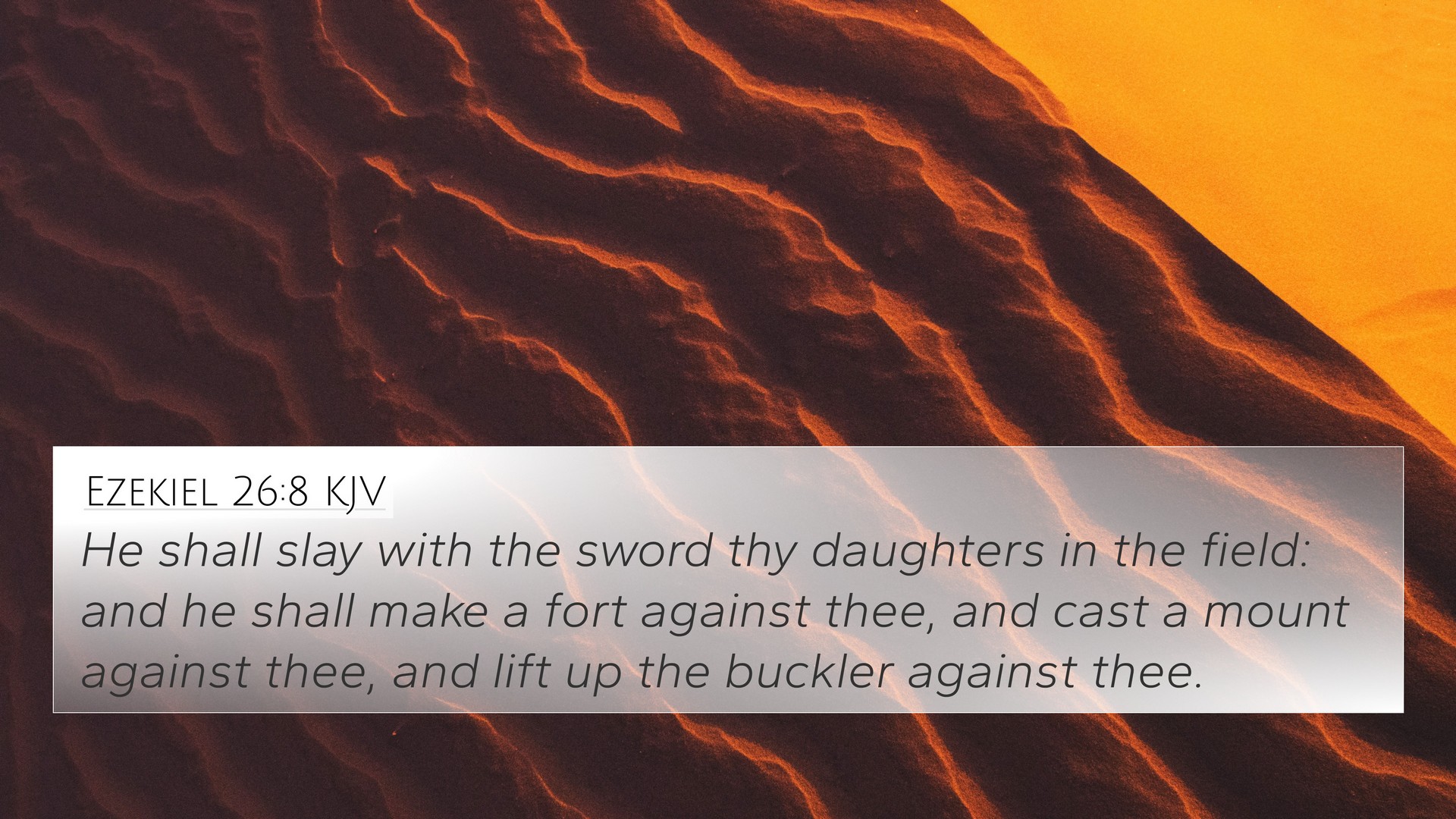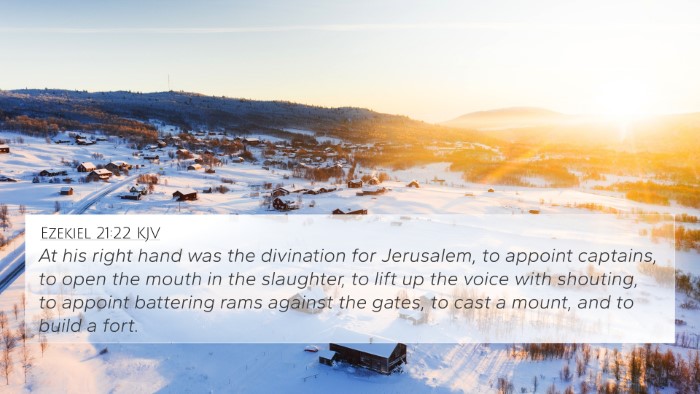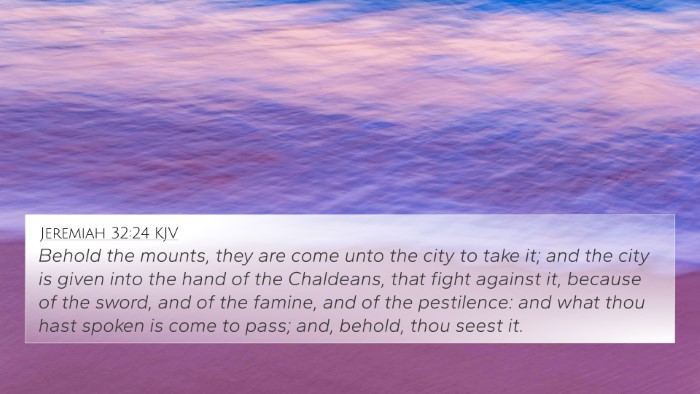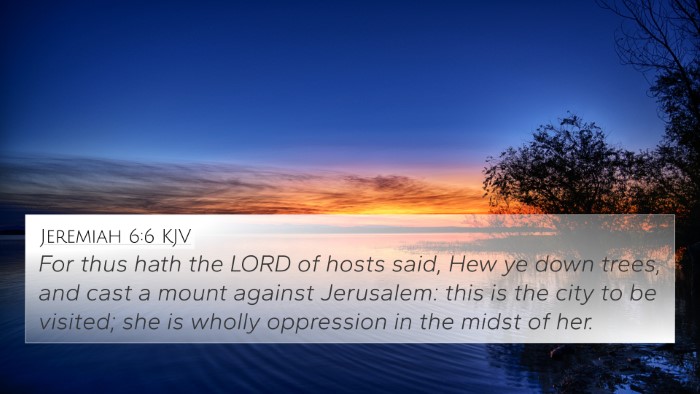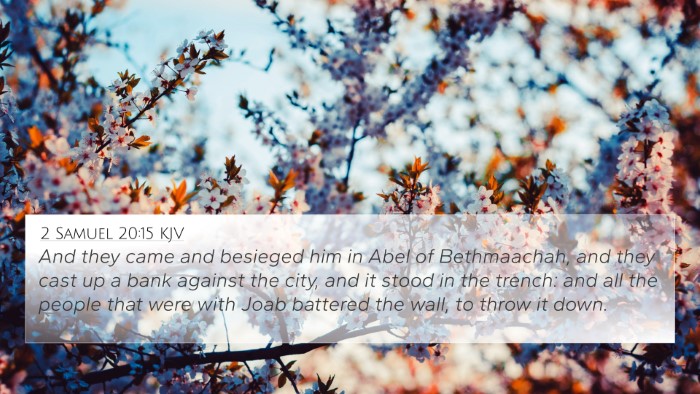Ezekiel 26:8 - Summary and Interpretation
Ezekiel 26:8 states, "They shall destroy the walls of Tyre, and break down her towers: I will also scrape her dust from her, and make her like the top of a rock." This verse anticipates the destruction of Tyre, symbolizing God’s judgment on prideful nations and cities that oppose His will.
Meaning and Insights
In examining this verse, various public domain commentaries shed light on its significance:
-
Matthew Henry: Henry emphasizes the comprehensive nature of the destruction that would come upon Tyre. He notes that this is not merely the dismantling of buildings but a symbolic act of God's judgment. The "dust scraped from her" suggests total desolation, leaving Tyre to be like the bare rock, uninhabitable and without glory.
-
Albert Barnes: Barnes points out that the prophecy against Tyre has historical fulfillment through Nebuchadnezzar and later Alexander the Great. This historical context highlights how divine prophecy interacts with human history, where God uses nations like Babylon and Greece as instruments of His judgment.
-
Adam Clarke: Clarke interprets the phrase "like the top of a rock" as a metaphor for utter desolation. He explains that rock represents something devoid of life, reiterating the severity of divine judgment. Clarke also connects this judgment to the theme of God's sovereignty over nations.
Thematic Connections
This verse can be viewed in light of the broader themes in Scripture:
- The Judgment of God: Ezekiel 26:8 exemplifies God’s capability to enact His judgment upon nations. It connects to other Biblical texts that illustrate the same theme.
- Division and Restoration: The contrast between destruction and later restoration in other prophecies (e.g., Isaiah 60:1-3) can provide a deeper understanding of present sufferings versus future hope.
- Human Pride: The fall of Tyre serves as a warning against human pride and self-sufficiency, similar to the downfall of Babylon (Revelation 18:2).
Bible Cross References
To further enrich the understanding of Ezekiel 26:8, here are relevant cross-references:
- Isaiah 23:1-18 - This passage outlines God’s judgment on Tyre and the economic ramifications of its destruction.
- Jeremiah 25:22 - God proclaims judgment on foreign kingdoms, including Tyre, reflecting the universality of His sovereign rule.
- Daniel 2:37-38 - God gives Nebuchadnezzar dominion over kingdoms, emphasizing His control over nations.
- Amos 1:9-10 - A declaration of judgment against Tyre, reinforcing themes found in Ezekiel.
- Ezekiel 27:1-36 - A lamentation for Tyre that highlights its former glory and inevitable demise.
- Revelation 18:10 - A vision of Babylon’s downfall, mirroring God’s pattern of judgment against prideful cities.
- Isaiah 14:22-23 - Pronouncement against cities for their arrogance before God, akin to Tyre's fate.
Understanding Through Cross-Referencing
The connections between Bible verses open up a richer understanding of themes present in God's Word. These cross-references can enhance the study of Ezekiel 26:8 by:
- Providing Context: Understanding the historical and theological context surrounding Tyre’s judgment aids in grasping the full meaning of the prophecy.
- Unifying Themes: Recognizing the repeated motifs of judgment, pride, and God's sovereignty across Scripture deepens one’s appreciation of His character.
- Linking Texts: Connecting seemingly disconnected verses fosters an inter-Biblical dialogue that enriches study methods.
Conclusion
In summary, Ezekiel 26:8 serves as an ominous proclamation of God’s impending judgment against Tyre. Through insights from renowned commentators such as Matthew Henry, Albert Barnes, and Adam Clarke, a comprehensive understanding of the verse emerges, revealing themes of divine sovereignty, judgment, and the consequences of human pride. The verse interconnects with multiple scriptures, creating a tapestry of biblical truth that highlights how God responds to nations that defy Him.
Utilizing tools for Bible cross-referencing can further enhance your study of Ezekiel 26:8, demonstrating how to identify connections across both the Old and New Testaments. The examination of these scriptures not only supports the fundamental truths embodied in this verse but also offers greater depth in understanding the narrative of God’s dealings with humanity.
